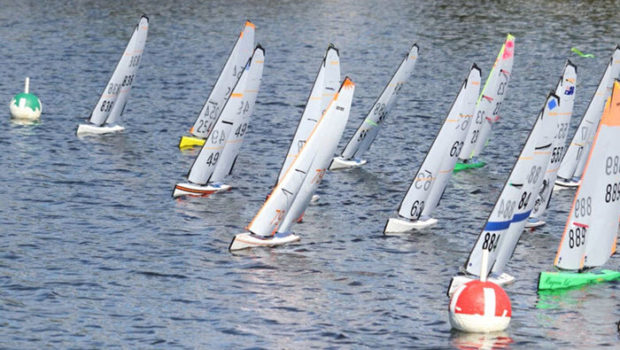Start sequence sound signals
Published on February 20th, 2023
by Chip Till, US Sailing Regional Race Officer & Club Judge
The second sentence of RRS 26 (starting races) states, “Times shall be taken from the visual signals; the absence of a sound signal shall be disregarded.” To paraphrase, the visual signals (flags) prevail over the sound signals.
While this is the rule, sailors do pay attention to the sound signals. In fact, an ill-timed sound signal made during a starting sequence is indeed a Race Committee error and there is no rule that says it may be disregarded. An ill-timed sound becomes more problematic if it results in boats being misled and results in an OCS.
So, if you’re approaching the line at your starting signal in a competitive 60 boat One-Design fleet, is it more important to look down the line at the flags on the Race Committee signal vessel or listen for the sound signals while you’re also trying to get a good start with maximum speed?
To this point, properly timed starting sequence sound signals are imperative. One of my favorite Race Committee equipment tools as a Race Officer is my iStart which is an “automatic sailboat race starter”. The iStart has a built-in air pump which sends pulses of air to a set of air horns to make the starting sound signals.
The air pump is powered by a large internal battery which is controlled by a sophisticated motherboard with a built-in timer display so that you know where you are at any given time during a starting sequence.
The motherboard also has dozens and dozens of pre-programmed timing modes so whether you are running two minute Radio controlled starts, three minute College starts, five minute Fleet starts, seven minute Match race starts or ten minute Olympic race starts, the iStart has a built it timing mode that you can select.
Given the iStart’s versatility and broad range of timing options, it really helps with timing during any starting sequence. The iStart is especially helpful when running Team Racing events given the magnitude of races that are run daily.
Even with 70 Team Races on a given day, which is 1,540 horns (22 horns per three minute start), the battery has enough power to last the whole day. If you find that your iStart battery performance begins to decline over time, it’s not a problem because you can send your unit in for service or you can replace the battery yourself.
Many of you that are already familiar with the iStart may be aware that in 2021 the company stopped making new units and serving existing units, but worry no more as the company is under new ownership. In early 2023, new units and service to existing units will be available. For additional details, click here.
Reprinted courtesy of US Sailing Race Management Committee, ussrmcnews@gmail.com.










 We’ll keep your information safe.
We’ll keep your information safe.